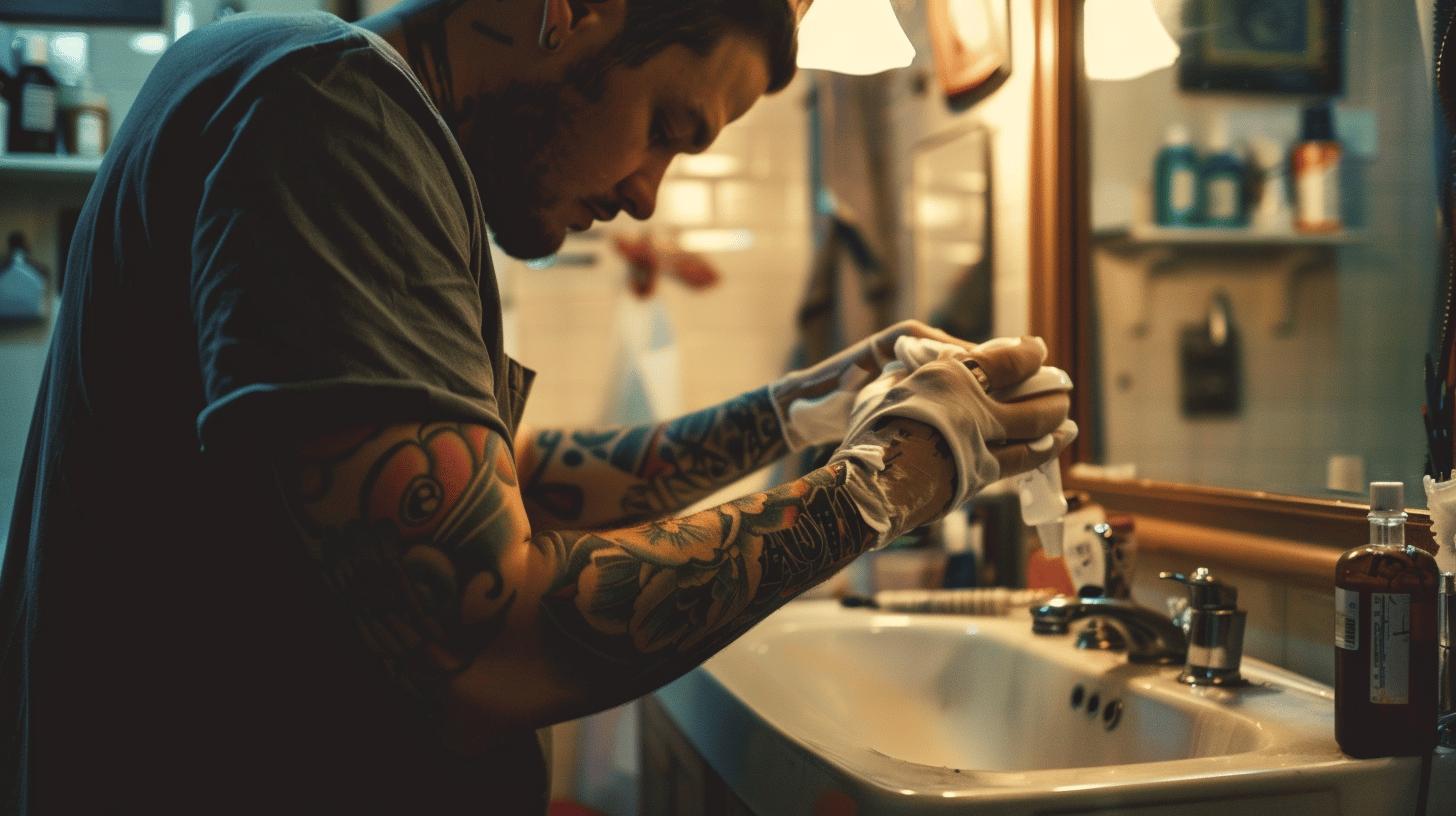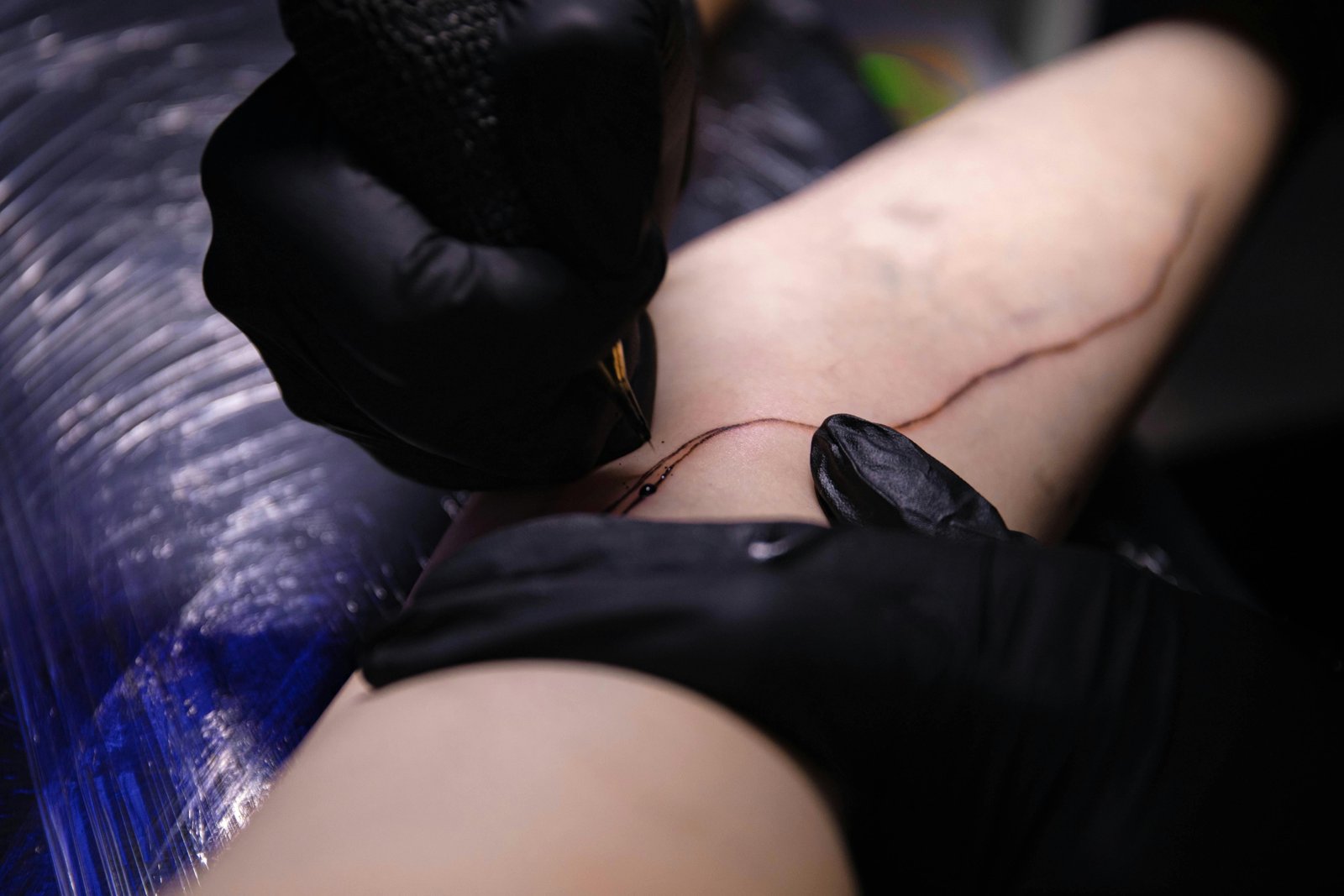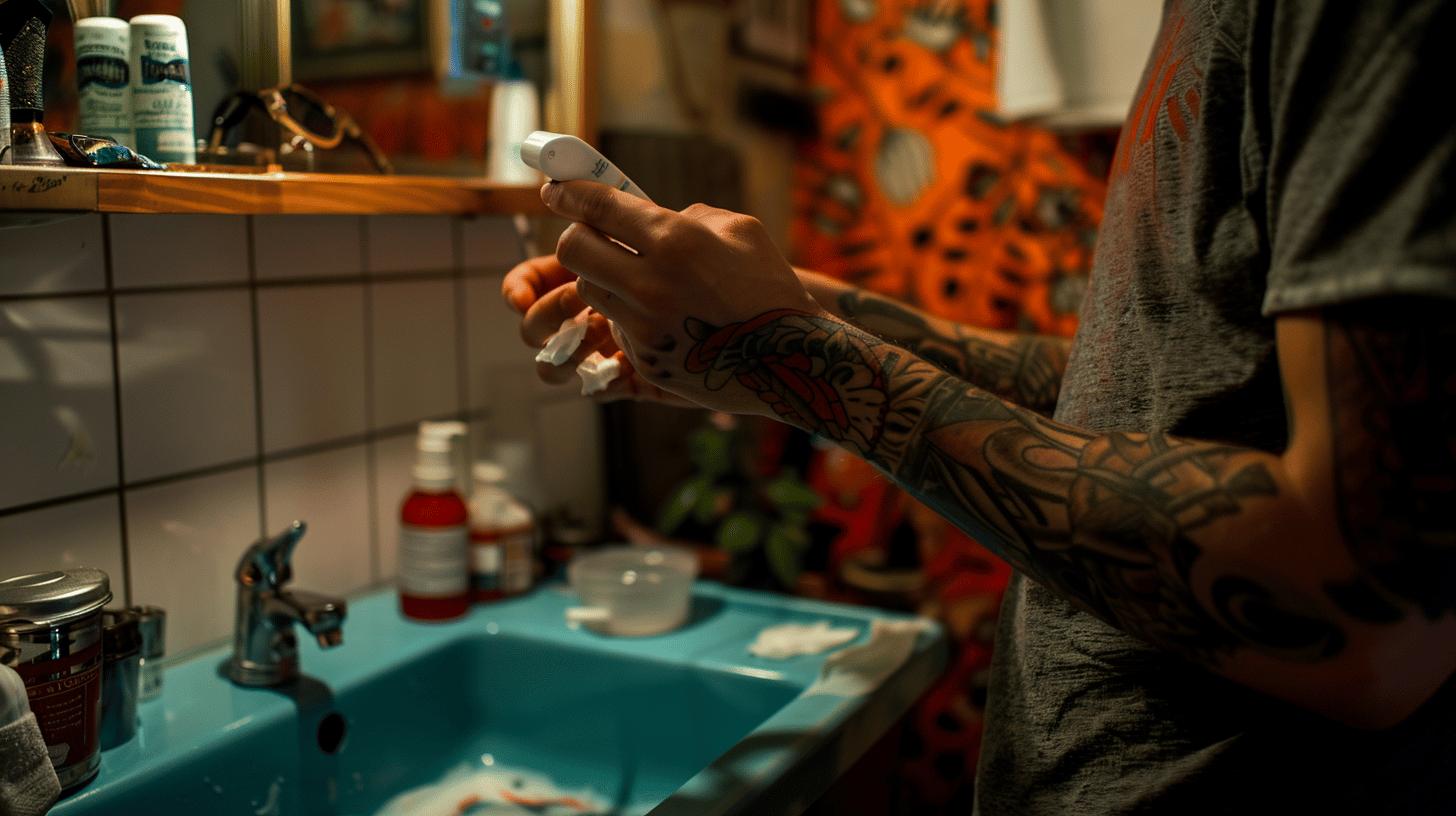Aquaphor for Tattoos: How to Use It for Fresh Ink and Proper Aftercare
Think you only need Aquaphor to soften lips or soothe nappy rash? Think again. When it comes to tattoo aftercare, Aquaphor for tattoos plays a much bigger role than most people realise. The right ointment can help protect your ink, speed up healing, and prevent common issues like scabbing or infection—if you know how and when to use Aquaphor properly. Whether you’re a first-timer or a seasoned collector, understanding how to use Aquaphor for tattoo aftercare can make a big difference. This guide breaks down the 10 best uses of this healing ointment to keep your tattoo looking its best.
What Is Aquaphor and How Is It Used for Tattoo Aftercare?
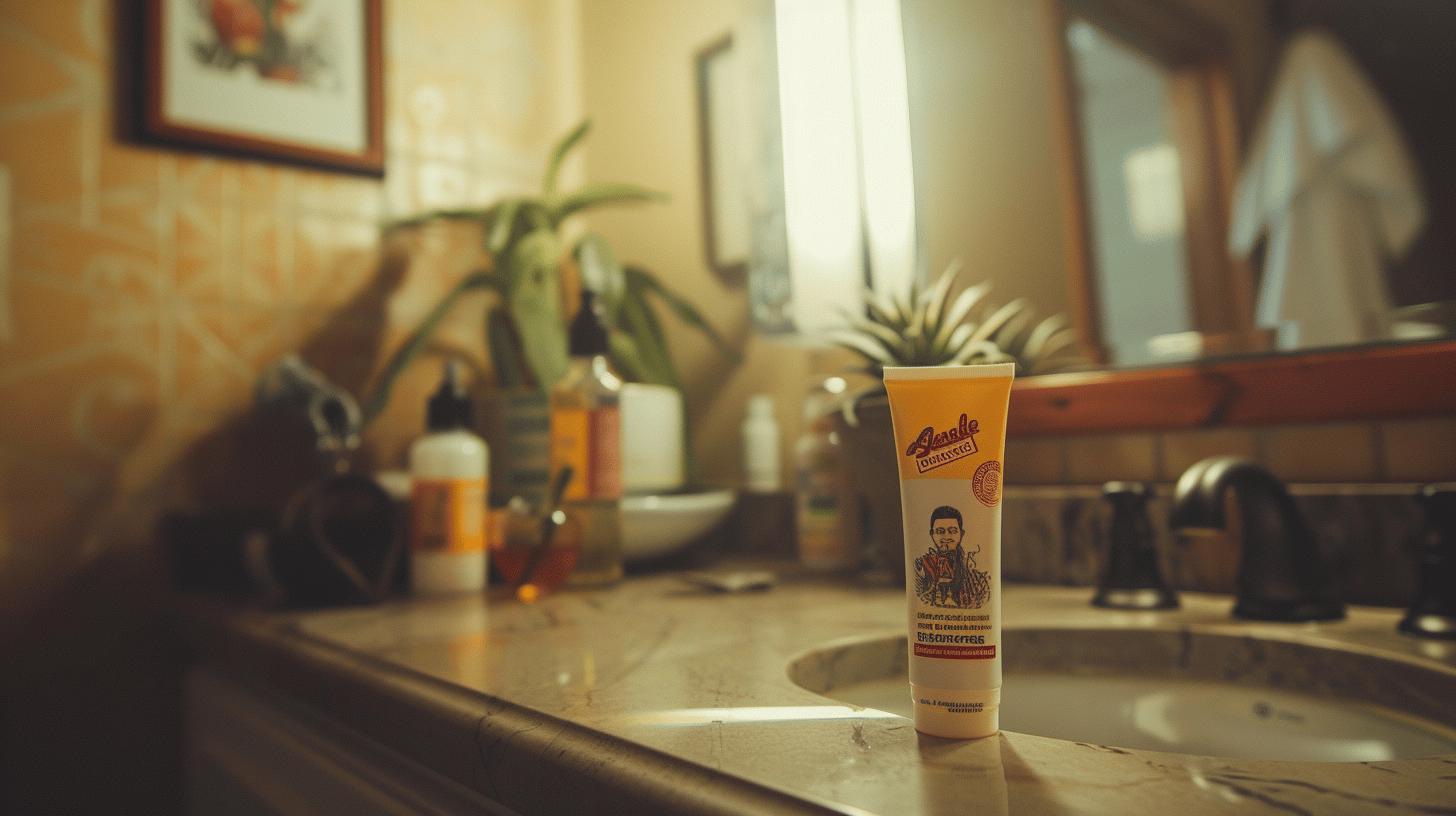
Aquaphor is a skin-protecting healing ointment made with petrolatum (41%), panthenol, lanolin alcohol, glycerin, and ceresin. It’s designed to hydrate and shield damaged or broken skin by forming a breathable barrier that locks in moisture and keeps bacteria out. Originally developed for dry and cracked skin, it’s now one of the most widely used tattoo aftercare products available.
When it comes to tattoos, Aquaphor is applied in the early stages—right after the tattoo is done and once the area stops weeping plasma. The ointment helps kick-start the natural healing process, offering comfort and protection while preventing scabs from hardening too much. This creates a better environment for the ink to settle and reduces the risk of excessive scabbing or fading.
Here’s how Aquaphor supports tattoo healing:
- Creates a breathable, protective barrier to keep dirt and bacteria out
- Helps soothe irritation and reduce inflammation around the fresh tattoo
- Moisturizes healing skin without overly softening it
- Reduces itchiness during early peeling, making it easier not to scratch
- Prevents scabs from cracking, which helps preserve the tattoo looks
- Easy to apply in a thin layer of Aquaphor without leaving a greasy residue
Tattoo artists often recommend Aquaphor because it’s accessible, proven, and simple to use. Whether you’re getting a new tattoo or caring for an older one, it remains a go-to option in both tattoo studios and at-home aftercare routines. When used correctly, Aquaphor helps heal your tattoo cleanly and comfortably.
How to Use Aquaphor on a New Tattoo: Step-by-Step Instructions
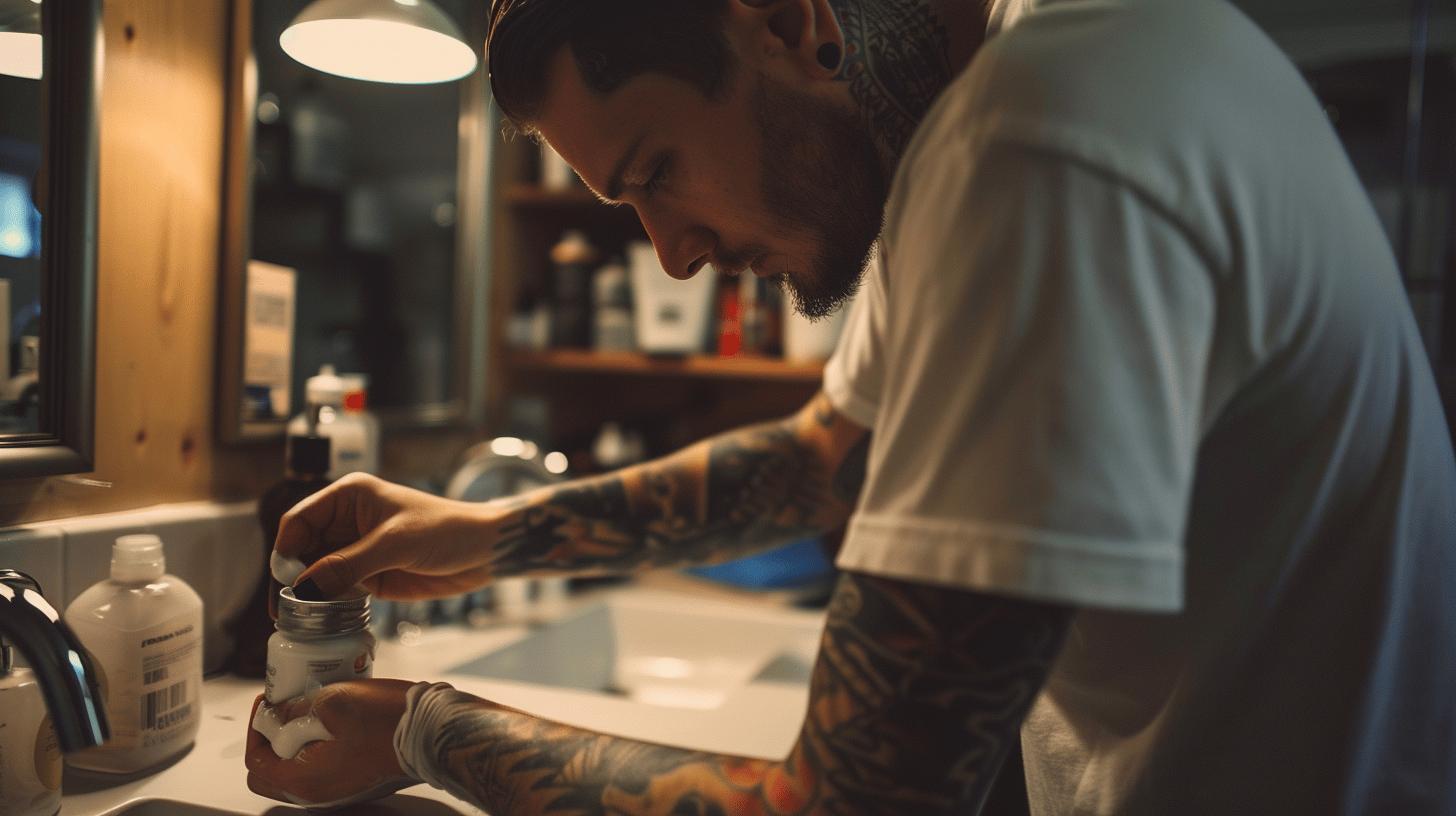
Aquaphor should only be applied to a fresh tattoo once the area has stopped weeping plasma—usually within the first few hours after the tattoo is done. Applying Aquaphor too early can trap excess fluid and slow down healing. Before applying Aquaphor to tattoo skin, make sure your hands and the tattoo are both clean and dry. Good hygiene is crucial during the initial healing process to avoid infection or irritation.
Here’s how to use Aquaphor on tattoo skin properly:
- Clean your tattoo
Gently wash with lukewarm water and a fragrance-free, antibacterial soap. Don’t scrub. Pat dry with a clean paper towel. - Wait for the tattoo to stop oozing
Allow a few hours for the tattoo to stop releasing plasma or blood. The skin should be dry before you apply any ointment. - Wash your hands thoroughly
Never apply Aquaphor with dirty hands—it can introduce bacteria into the healing tattoo wound. - Apply a thin layer of Aquaphor
Use just enough Aquaphor healing ointment to lightly coat the tattoo. The skin should look slightly shiny but not greasy. - Repeat 2–3 times daily
Reapply after gentle cleaning or if the skin feels dry or tight. Avoid overuse, which can clog pores and slow down healing. - Continue for 3–5 days
Use Aquaphor for the first few days of healing, especially during the scabbing phase. Once peeling starts, switch to a fragrance-free lotion.Tattoo Size Application Frequency Small 2× daily Medium 2–3× daily Large 3× daily or as needed Once the *tattoo starts to peel*, usually around day 4 to 7, most *tattoo artists recommend* switching from *Aquaphor* to a *moisturizer* or *tattoo aftercare lotion*. Look for *aftercare products* that are *fragrance-free*, lightweight, and designed to *hydrate* without clogging pores. This helps *your tattoo heal* completely and keeps the *ink* looking sharp.
Is Aquaphor Good for Tattoos? Pros and Cons Explained
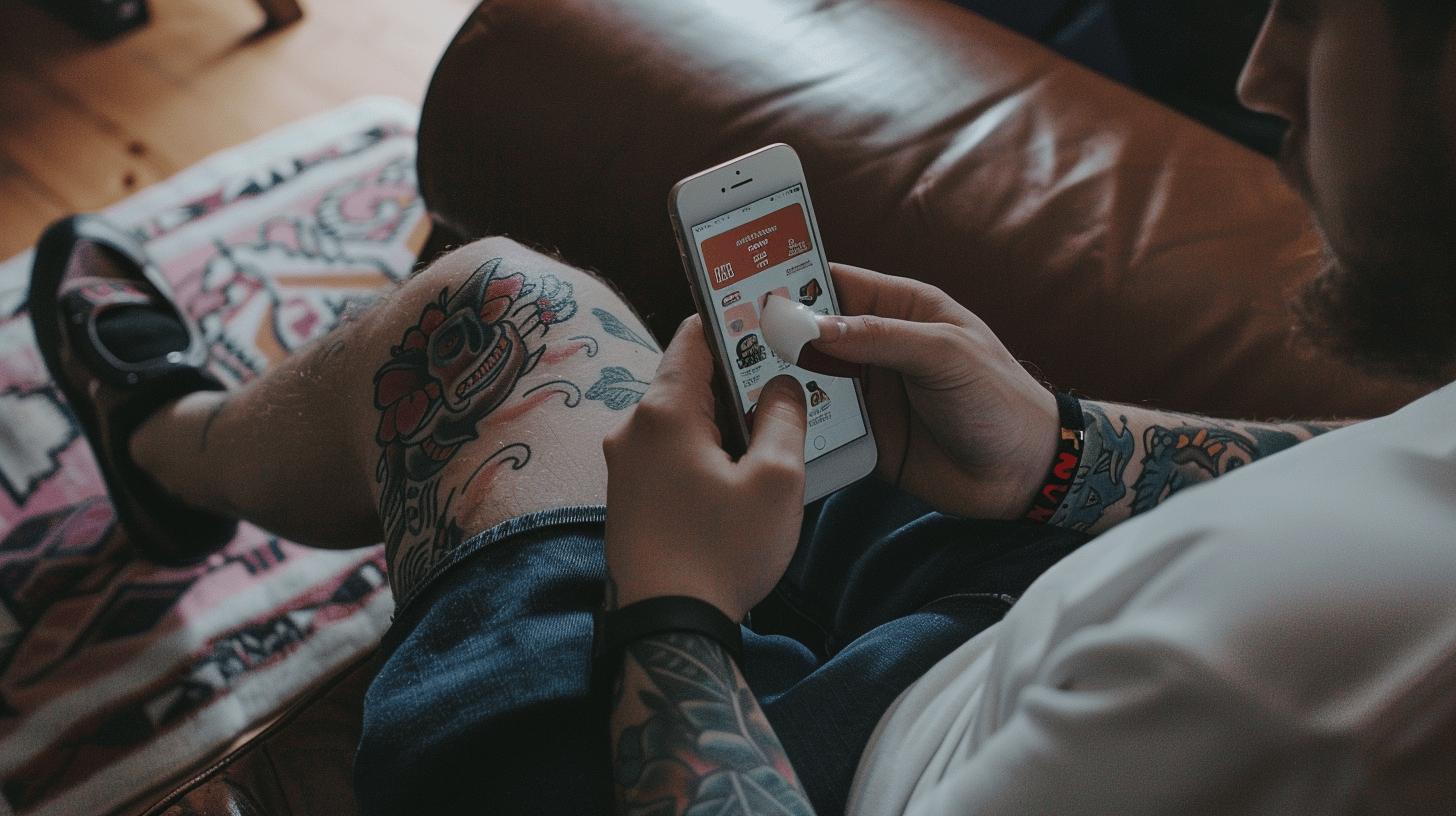
Yes, Aquaphor is good for tattoos, especially during the initial healing process. It works by forming a breathable barrier that locks in moisture and shields the skin from bacteria and external irritants. This is especially helpful in the first few days after getting a tattoo, when the skin is most vulnerable and the risk of infection or irritation is higher.
The Aquaphor healing ointment is often recommended by tattoo artists as part of a proper tattoo aftercare routine. It helps to soothe inflammation, calm redness, and reduce itchiness during peeling. By keeping the skin hydrated, it prevents scabs from drying out and cracking, which can damage the ink and disrupt healing.
Still, Aquaphor for tattoos isn’t perfect for everyone. Overuse can clog pores or cause breakouts, especially if applied too thickly or for too long. Some people may also find it too greasy, or they may prefer a tattoo balm or non-petroleum based option once the skin begins to peel.
Pros of using Aquaphor for tattoo healing:
- Creates a protective barrier to keep bacteria out
- Hydrates and softens healing skin
- Soothes irritation and reduces inflammation
- Helps prevent scab cracking and ink disruption
- Easy to apply and widely available
Cons of using Aquaphor for tattoo healing:
- Can clog pores if over-applied
- May cause pimples or folliculitis on sensitive skin
- Too greasy for some users’ preferences
- Not suitable once peeling begins—should switch to lotion
- Contains lanolin, which may trigger allergic reactions in rare cases
The claim that Aquaphor causes tattoos to fade has no clinical support. While improper use—like layering too thickly or failing to clean the skin—can slow down healing, the Aquaphor fading tattoos myth is based on anecdotal reports. Dermatologists and tattoo artists often recommend Aquaphor during the early stages of healing, as long as it’s used correctly and in a thin layer. For most people, it remains a reliable choice to help your new tattoo heal cleanly and comfortably.
Aquaphor vs Vaseline, A&D, Eucerin, and Hustle Butter: Which Is Best?
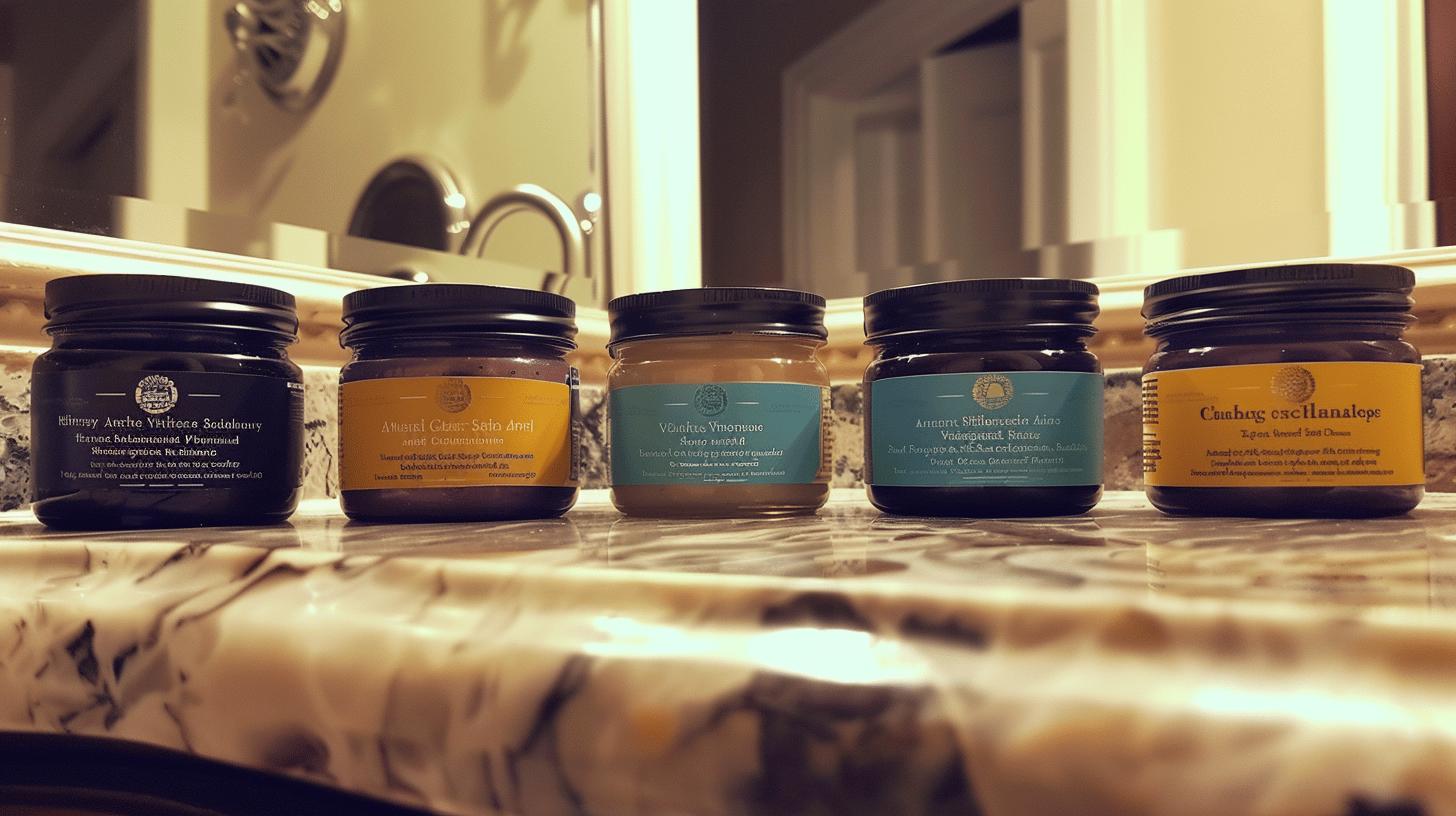
Choosing the best ointment for tattoo aftercare can affect how well your tattoo heals and how the ink settles into your skin. While many products claim to support the tattoo healing process, not all are created equal. Comparing Aquaphor vs Vaseline, A&D, Eucerin, and Hustle Butter helps break down which one suits your skin type, sensitivity, and tattoo care preferences.
| Product | Petroleum-Based | Key Ingredients | Skin Sensitivity | Tattoo Brightness |
|---|---|---|---|---|
| Aquaphor | Yes | Panthenol, Glycerin | Moderate | Good |
| Vaseline | Yes | Pure Petrolatum | Low | Low |
| A&D | Yes | Vitamins A & D | Low–Moderate | Low |
| Eucerin | Mixed | Ceramides, Urea | High | Moderate |
| Hustle Butter | No | Shea Butter, Coconut Oil | High | Excellent |
Aquaphor healing ointment is often the first choice when it comes to caring for a fresh tattoo. It hydrates and protects the healing wound with added ingredients like panthenol and glycerin, making it more than just petroleum jelly. Compared to Vaseline, which lacks moisturising agents, Aquaphor offers better long-term support for skin healing and helping your tattoo heal without suffocating the area.
A&D contains helpful vitamins but may irritate sensitive skin, making it less ideal for those prone to breakouts or reactions. Eucerin offers a fragrance-free, hydrating alternative, especially good once the tattoo starts peeling and you switch from ointment to lotion. Hustle Butter stands out for those looking for natural healing—it’s petroleum-free and packed with tattoo-safe oils that keep your tattoo looking bright through the healing process.
Each product has its place in an aftercare routine. If you’re treating a small new tattoo and want easy access, Aquaphor is a good all-rounder. For sensitive skin or large pieces, Hustle Butter or Eucerin might offer better results. Tattoo artists often recommend using what’s best for your skin type and how your tattoo reacts during the initial healing process.
When to Stop Using Aquaphor on a Tattoo and What to Use Next
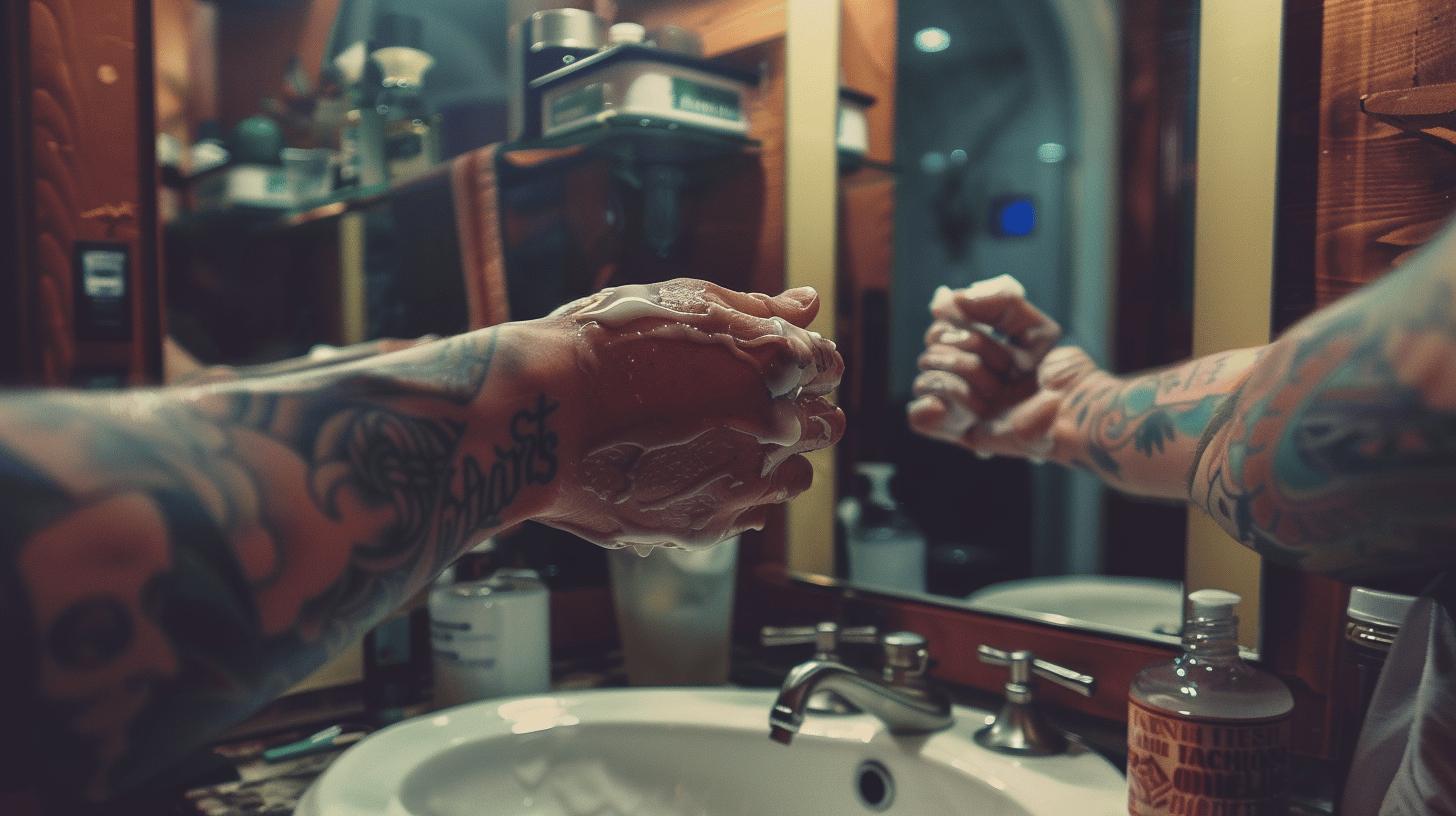
Aquaphor is a good choice for the early stages of tattoo aftercare, but it’s not meant for the entire healing process. During the first few days after getting a tattoo, the skin behaves like an open wound. Using a healing ointment like Aquaphor helps to soothe irritation, hydrate the skin, and protect the fresh tattoo from bacteria. But once the tattoo begins to peel, the skin’s needs change.
When should you stop using Aquaphor on a tattoo?
Once your tattoo starts peeling, usually between days 4 to 7, it’s time to switch to a fragrance-free lotion. Continuing to use Aquaphor beyond this point can actually slow down healing by trapping dead skin and clogging pores.
Here are 4 signs it’s time to stop using Aquaphor:
- Tattoo starts to peel or flake
- Skin feels less tight
- Redness subsides
- Itchiness increases slightly
At this stage, your healing tattoo no longer needs a thick ointment. A moisturizer is better suited to support the skin’s natural repair without suffocating it. Lotions like Aveeno Daily Moisturising Lotion, Eucerin Advanced Repair, or Lubriderm Daily Moisture are popular tattoo aftercare products. They’re unscented, lightweight, and designed to hydrate without irritation. These are ideal for the second phase of tattoo healing when the skin starts to rebuild its barrier.
Unlike petroleum jelly-based ointment which creates a seal, lotion allows the skin to breathe while still keeping it moisturised. This helps reduce itching and supports better tattoo looks over time. While Aquaphor for tattoos is great for the start, switching to a suitable moisturizer helps the healing skin settle the ink more evenly and prevents blocked pores.
Once you’ve switched from Aquaphor to lotion, apply moisturiser 2–3 times a day or whenever the skin feels dry or itchy. Keeping the area soft and hydrated helps your tattoo heal properly and keeps it looking sharp for years to come.
Aquaphor Myths and Common Mistakes in Tattoo Aftercare
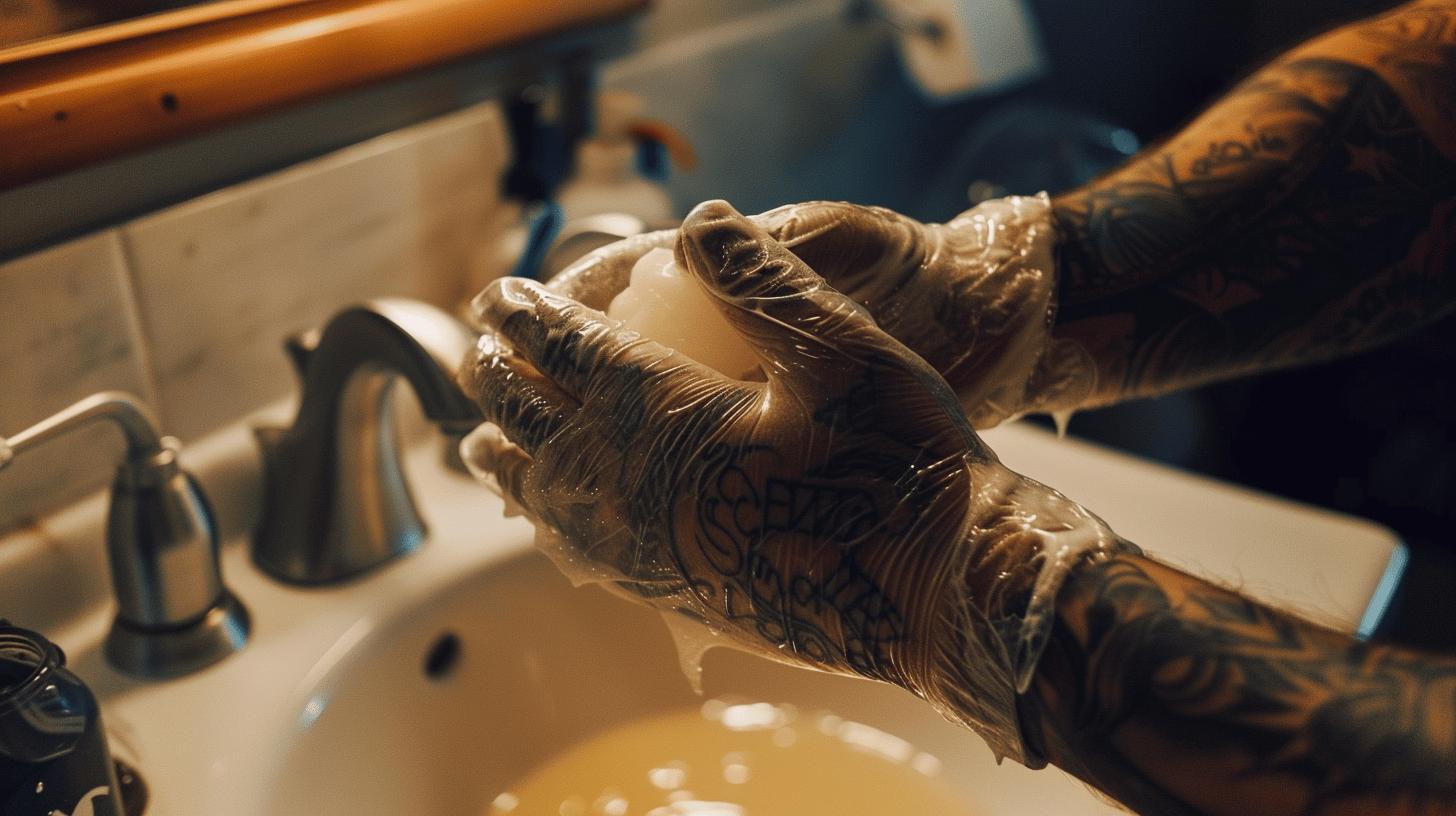
One of the most common mistakes with Aquaphor for tattoos is applying too much of it. Is a thick layer of Aquaphor bad?
Yes. A thick layer can clog pores, trap bacteria, and delay the natural healing process for your tattoo. It also creates a sticky surface that can collect dust or lint, which may lead to irritation or infection.
Another issue is people continuing to use Aquaphor long after the peeling phase. The ointment is most effective during the first few days of healing when the skin is still raw and vulnerable. Once your tattoo starts to peel, switching to a fragrance-free lotion is a better way to moisturize and let the healing tattoo breathe.
Here are 5 common mistakes people make when applying Aquaphor to a new tattoo:
- Applying too thick a layer
- Using it beyond the peeling stage
- Not cleaning hands or tattoo prior
- Applying over lotion or damp skin
- Not patting dry before application
Can Aquaphor cause pimples on new tattoo skin?
Yes, if overused. A heavy application can lead to clogged pores, especially in people with sensitive or oily skin. This might result in small pimples or bumps around the fresh tattoo.
Can Aquaphor clog pores tattoo healing areas need to stay open?
Yes. That’s why tattoo artists recommend a very thin layer—just enough to keep the area slightly shiny without being greasy.
Does using Aquaphor cause the ink to fade?
No. The idea that Aquaphor causes tattoos to fade is a myth. When used correctly, it actually helps protect the ink and supports the skin’s natural healing. To avoid smudging or dullness, always clean the area first and apply a thin layer of Aquaphor. That’s how you help your tattoo heal and look sharp long-term.
Which Aquaphor Product Should You Use for Tattoos?
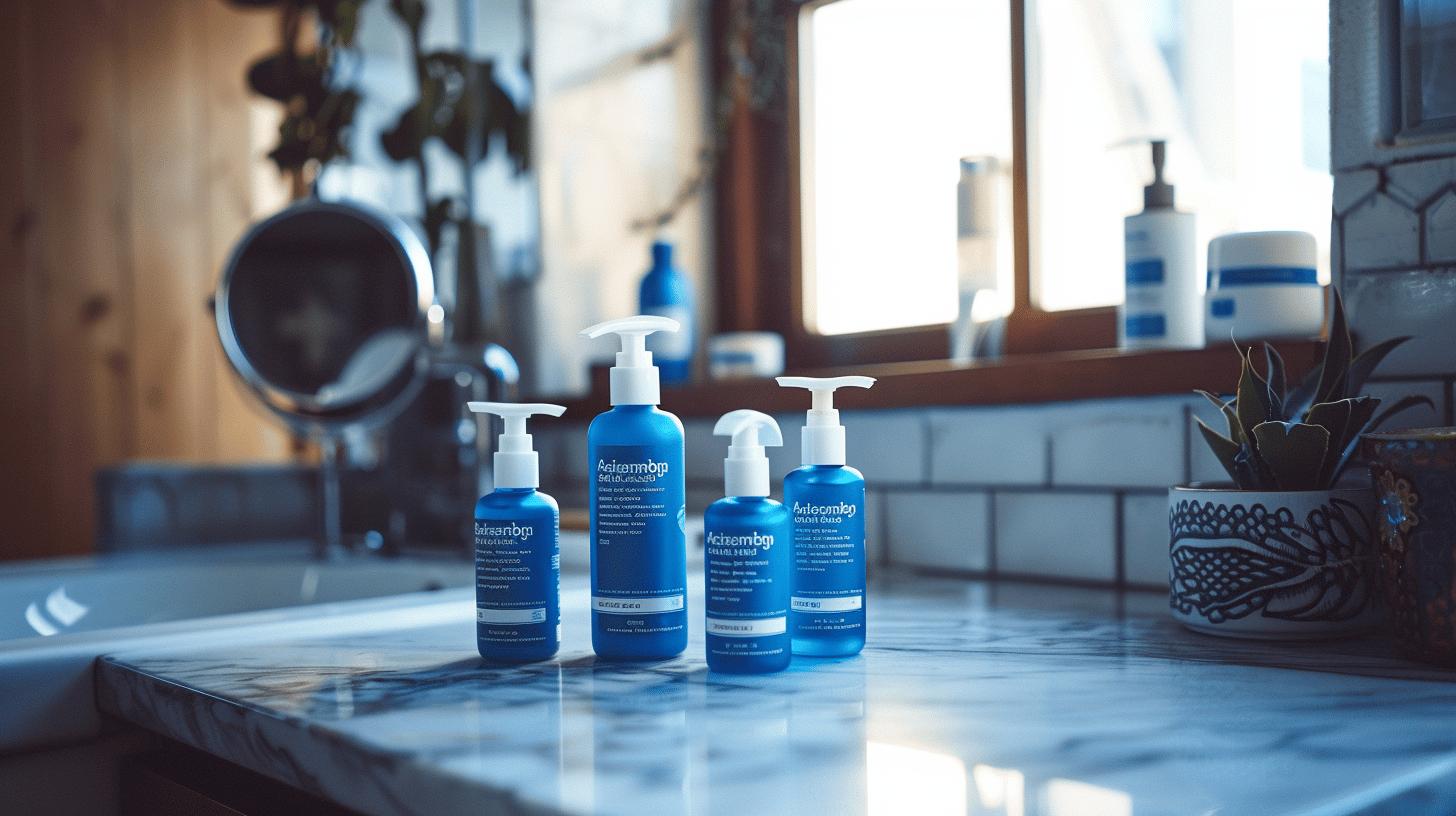
The most commonly used product is Aquaphor Healing Ointment. This is the standard version that most tattoo artists recommend using during the first few days of the tattoo healing process. It’s designed to hydrate, soothe, and protect your skin while forming a breathable barrier over the fresh tattoo. It’s especially effective in the initial healing process, helping to prevent scab cracking and keeping the ink from drying out too quickly.
If you’re wondering which Aquaphor for tattoos is best, here’s a breakdown of the four main options available:
- Healing Ointment (standard)
Best for the first 3–5 days after getting a tattoo. Helps soothe irritation and support the natural healing process. - Baby Healing Ointment (gentle, same formula)
Nearly identical to the standard version, but marketed for sensitive skin. A good option if you’re prone to irritation. - Ointment Body Spray (easy application)
Great for large tattoos or hard-to-reach areas like backs and shoulders. Spray-on format reduces friction on healing skin. - Unscented Lotion (for after peeling phase)
Use unscented lotion once peeling begins. Keeps the skin moisturised without clogging pores or slowing down healing.
Each version of Aquaphor has its place in proper aftercare. The standard healing ointment works well for small to medium fresh tattoos on easily accessible areas. For larger pieces or sensitive skin, the Aquaphor baby healing ointment or ointment body spray may be more comfortable. Once the tattoo peels, switch to the unscented lotion to keep the healing skin hydrated without disrupting the tattoo healing process.
Aquaphor Alternatives for Tattoo Aftercare: What to Use Instead
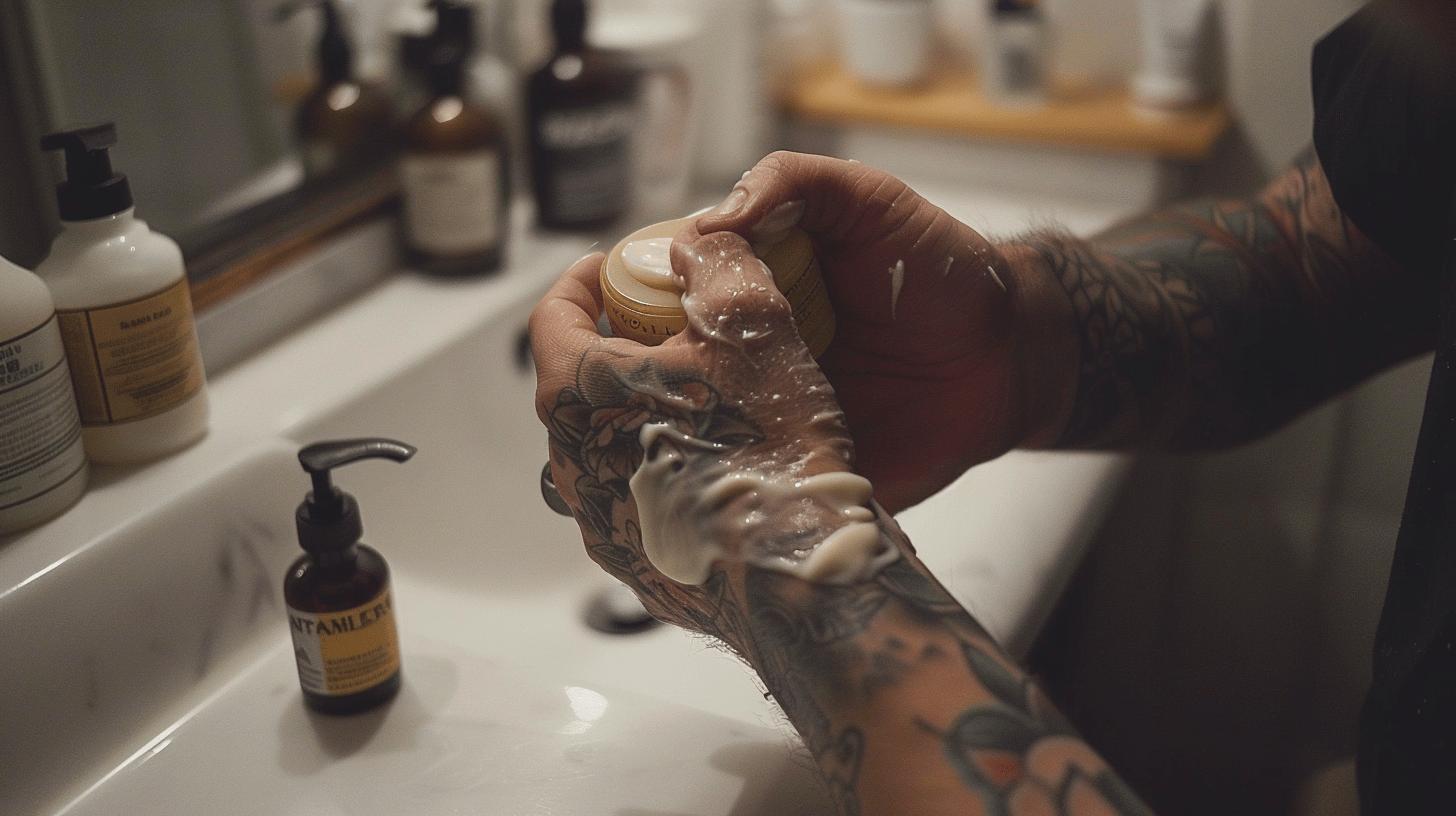
Some people choose to avoid using aquaphor for tattoos due to skin sensitivity, allergies, or breakouts. While aquaphor healing ointment is widely used during the initial healing process, it’s not the only option. Those looking for a petroleum-free approach or more natural tattoo aftercare products have several effective alternatives to keep their tattoo healing cleanly and comfortably.
Here are six recommended aquaphor alternatives for tattoos:
- Hustle Butter – A petroleum-free tattoo balm made with shea butter, mango butter, and coconut oil. Popular for its soothing feel and natural healing support.
- Ink Balm by Numbed Ink – Designed specifically for tattoos, this balm includes vitamins A, C, and E to help your tattoo heal and keep the ink vibrant.
- INK-EEZE Hi-Def Balm – Combines essential oils and botanical extracts to hydrate healing skin without clogging pores.
- Aveeno Fragrance-Free Lotion – A gentle post-peel moisturiser that hydrates without irritation. Works well once your tattoo starts to flake.
- Eucerin Advanced Repair – A lightweight fragrance-free lotion that supports skin healing after the ointment phase has passed.
- Lubriderm Daily Moisture – Non-greasy and unscented, this lotion helps moisturize and protect your tattoo once peeling begins.
Feature Aquaphor Ink Balm Petroleum-Free No Yes Natural Oils No Yes Vitamins No A, C, E Texture Ointment Balm Breathability Moderate High Choosing the best tattoo aftercare balm or lotion depends on your skin type, the size of your tattoo, and how your body responds during healing. For sensitive skin or large areas, a breathable balm like Ink Balm or Hustle Butter may be easier on the healing skin. If your tattoo is in a spot prone to rubbing or irritation, a lightweight lotion like Aveeno or Eucerin can help soothe and hydrate without clogging pores. Whatever you use instead of aquaphor, the goal is to support the tattoo healing process without slowing it down.
Final Words
Using Aquaphor for tattoos has become a mainstay in early tattoo aftercare — and for good reason.
From its ability to soothe irritated skin and support the tattoo healing process, to the ease of applying Aquaphor healing ointment on a new tattoo, it’s clear why it’s often recommended by artists and studios alike.
When used correctly, this ointment helps hydrate, protect, and promote skin healing without risking that your ink will fade. But applying too much, or continuing after peeling starts, can compromise the skin healing process.
When it’s time to switch, opt for a fragrance-free lotion or tattoo balm suited for your skin type. Whether it’s Aquaphor baby healing ointment, Aquaphor ointment body spray, or another moisturiser or balm, choosing the right tattoo care products makes all the difference.
The key is understanding your skin, keeping your aftercare simple, and using only what’s needed to heal right.
FAQ
Q: What is the best ointment for tattoo aftercare?
A: Aquaphor healing ointment is widely recommended by tattoo artists for new tattoo care. It helps protect the skin, supports the healing process, and keeps your tattoo hydrated and soothed during the initial recovery phase.
Q: Can I use Aquaphor on a new tattoo the first day?
A: Yes, applying Aquaphor on a fresh tattoo is safe once it’s been cleaned and dried. Use a thin layer to avoid clogging pores and help protect the tattoo while it begins to heal.
Q: How long should I use Aquaphor on my tattoo?
A: You should use Aquaphor for tattoo aftercare during the first 3–5 days. Once the tattoo starts peeling, switch to a fragrance-free lotion to keep the skin moisturised without blocking the healing process.
Q: Does Aquaphor fade tattoos?
A: No, there’s no clinical proof that Aquaphor causes tattoos to fade. Myths about this often come from misuse, like applying thick layers or using it for too long once peeling begins.
Q: Aquaphor vs Bepanthen tattoo – which is better?
A: Both are used in tattoo aftercare, but Aquaphor is petroleum-based and helps hydrate and soothe. Bepanthen contains dexpanthenol for skin regeneration. Tattoo studios often recommend Aquaphor for its barrier-forming and moisturising effects.
Q: Is Aquaphor better than Eucerin or Vaseline for tattoos?
A: Aquaphor offers more skin-healing ingredients than Vaseline and is thicker than most Eucerin creams. Tattoo artists recommend Aquaphor for its blend of hydration and protection without overloading the skin like pure petroleum jelly.
Q: Can Aquaphor cause pimples or clog pores on a healing tattoo?
A: Overapplying Aquaphor can clog pores, particularly if the tattooed area isn’t cleaned well. Use a thin layer and wash your hands before each application to help your tattoo heal properly and prevent breakouts.
Q: What should I use once I stop using Aquaphor on my tattoo?
A: After 3–5 days, switch from Aquaphor to a fragrance-free lotion like Eucerin or Aveeno. These moisturisers keep the healing skin hydrated without interfering with the tattoo healing process.
Q: Which Aquaphor product is best for tattoos?
A: Aquaphor Healing Ointment is the most used for tattoo aftercare, but the Aquaphor Baby Healing Ointment and Body Spray version also work well depending on tattoo size and application needs.
Q: What can I use instead of Aquaphor for tattoo healing?
A: Alternatives like Hustle Butter, Ink Balm, and INK-EEZE are great aquaphor alternatives for tattoos. They’re petroleum-free, support natural healing, and are preferred by some for sensitive skin or vegan aftercare routines.



